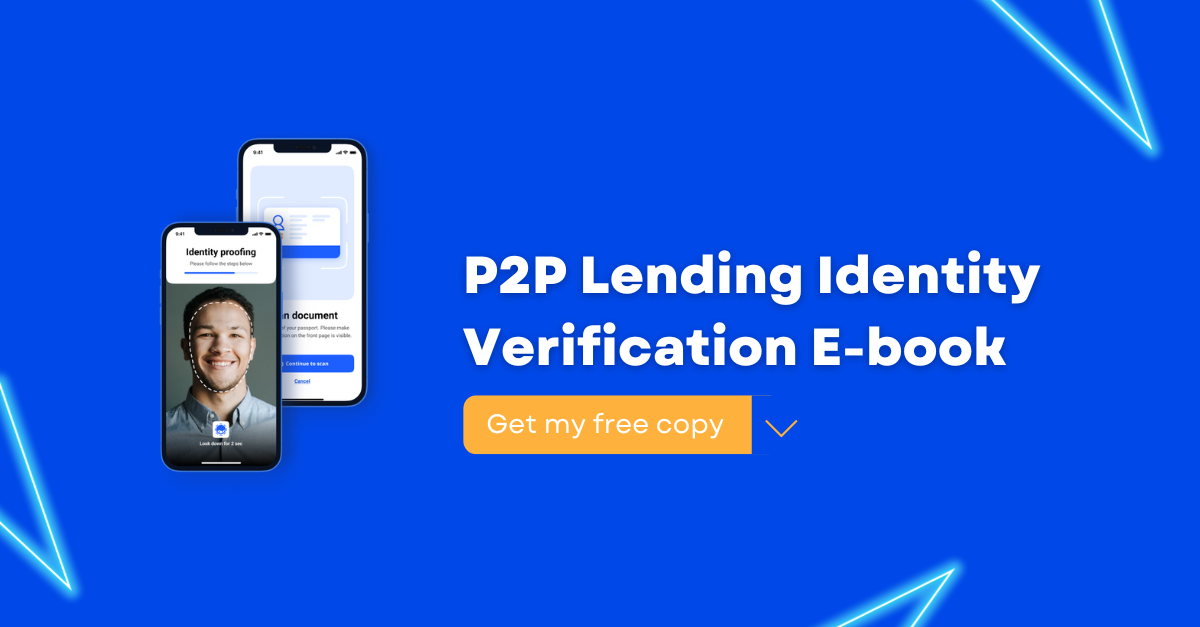P2P lending is a popular option for those looking to invest their money in a low-risk, high-return venture. However, knowing how safe p2p lending is is essential before signing up with any company.
What Is Peer-to-Peer (P2P) Lending?
Peer-to-peer lending is a type of financing that is becoming increasingly popular among businesses. It stands for “peer-to-peer lending” and borrows money from investors instead of traditional lenders.
The investor provides the loan amount in exchange for a return on their investment, usually in interest payments. P2P lending allows businesses to access capital quickly and without the need for collateral or a credit score check. This makes it ideal for newer businesses or those with limited credit histories.
P2P lending also offers more favorable terms and lower interest rates than traditional bank loans, making it an attractive option for businesses looking to fund their operations. Companies can access several types of loans, depending on their needs, including installment loans, lines of credit, and business loans. Regardless of the type of loan chosen, lending offers an efficient and cost-effective way to access the capital needed to fund business operations.
How Does Peer-to-Peer (P2P) Lending Work?
P2P lending is an alternative form of borrowing and lending that eliminates traditional financial institutions. It is a form of crowdfunding where lenders and borrowers are connected through online platforms.
The process begins when a borrower applies for a loan and states the amount and purpose of the loan. After that, P2P lenders review applications and decide whether to lend out the requested amount. If approved, the loan is funded by multiple lenders.
The borrower makes monthly payments to the online platform responsible for distributing payments to each lender. This model can help borrowers who need help getting approved for a traditional loan, as P2P lenders may be more lenient with their requirements. Additionally, this model can help lenders earn higher returns than conventional investments.
Overall, P2P lending is an innovative way for borrowers and lenders to connect without needing a financial institution.

The Risks Of Peer-to-Peer (P2P) Lending. Are my investments and data secure?
When it comes to Peer-to-Peer (P2P) lending, it is crucial to understand the risks involved. P2P lending involves borrowing money from individuals or groups of people instead of a bank or other financial institution. While this can be less costly than traditional lending, certain risks are associated.
One of the primary risks of P2P lending is that your investments and data may not be secure. It is essential to consider the security measures taken by the P2P platform you are using, such as encryption of data, authentication measures, and any other security protocols in place.
Additionally, it is important to understand the rights of lenders and borrowers on the platform, including repayment terms. Knowing these terms clearly can help protect your investments and data from potential scams or losses.
Peer-to-Peer (P2P) Lending Fraud
Peer-to-peer (P2P) lending fraud is a severe problem. P2P lending fraud can lead to acquiring loans from unsuspecting parties. Therefore, knowing the risks associated with P2P lending and how to protect your business is essential.
Fraudulent activities include falsified loan applications, identity theft, and fake loan payments.
Avoiding P2P lending fraud includes:
- researching potential lenders;
- verifying the lender’s legitimacy;
- understanding all terms and conditions associated with the loan.
It is crucial to only lend money to those with a good credit history but only accept loans from trusted sources.
By taking these steps, you can help protect yourself from becoming a victim of P2P lending fraud.
Peer-to-Peer (P2P) Lending Fraud Cases
The Number of P2P lending frauds has increased in recent years
Several high-profile cases of fraud in the P2P lending industry have resulted in significant financial losses for investors and damage to the platforms’ reputation. Here are a few examples:
Ezubo: Ezubo was a P2P lending platform in China. The platform promised investors high returns on loans to small businesses. However, it appeared to be a Ponzi scheme (a fraudulent investment scheme in which returns are paid to earlier investors using the capital contributed by newer investors). The founders of Ezubo were arrested, and the company had defrauded over 900,000 investors out of more than $7.6 bln.
LendingClub: LendingClub is a US-based P2P lending platform that went public. In 2016, the company sold $22 mln. in loans to an investor that needed to meet the investor’s requirements. The incident led to the resignation of the CEO and a drop in the company’s stock price.
Funding Circle: Funding Circle is a UK-based P2P lending platform that went public in 2018. In 2019, it was revealed that the company had lent money to a fraudulent borrower who had used false documents to secure the loan. The incident resulted in a loss of £27 mln. for Funding Circle investors and a drop in the stock market.
The cases of Ezubo, LendingClub, and Funding Circle demonstrate how important it is for investors to conduct due diligence and risk management when investing in P2P lending platforms. To protect the business, you must find an appropriate verification identity verification solution.
Fortunately, by using Mob.id’s CDD solution, lenders can prevent fraudsters from using fake identity documents to create fake borrower accounts on their platforms.
Mob.id offers several features that enable lenders to verify the identity of borrowers accurately and prevent fraudulent activities, including:
Optical Character Recognition (OCR): This feature allows verifying the authenticity of a borrower’s identity document by reviewing it and comparing the information on the record to the borrower’s provided information. This verification would prevent fraudsters from using fake identity documents to create fake borrower accounts on P2P lending platforms. Most fraud cases are relevant to a simple forgery that can be detected in this step.
NFC check: This feature enables P2P lending platforms to access the chip information on the borrower’s identity document and review the data’s integrity. According to Onfido Fraud 2023 report, 27% of all fraud is relevant to more complex manipulations to create a forgery, which still will be identified.
Document Authenticity: This feature allows platforms to refer to the government source ICAO PKD to validate the status and origin of the borrower’s identity document. It prevents fraudsters from using identity documents that are invalid or issued by an unrecognized authority. PKD provides the ultimate protection from document fraud since it relies on an open government database.
Biometric Check: This feature enables P2P lending platforms to verify the ownership of the borrower’s identity document by using face recognition technology. This would prevent fraudsters from using stolen or borrowed identity documents to create fake borrower accounts.
Consistency check: This feature allows P2P lending platforms to verify that all the information the borrower provides is consistent and accurate. It’s another layer of protection to spot any difference in the identity information a borrower provides.
Peer-to-Peer (P2P) Lending KYC and Regulations
P2P lenders must comply with KYC regulations to ensure the safety and security of both lenders and borrowers. Lenders must verify the identity of their customers and assess the risk associated with providing them with loans.
This process typically involves collecting personal details, financial records, credit histories, and other relevant documents.
In addition to KYC regulations, P2P lenders must comply with anti-money laundering (AML), data privacy, and local laws to ensure borrowers can pay off a debt.
Furthermore, lenders must also adhere to data privacy laws, such as the General Data Protection Regulation (GDPR), to protect their customers’ personal information from misuse or abuse.
Conclusion
P2P lending allows businesses to access capital quickly without collateral or a credit score check. It eliminates traditional financial institutions from the equation and is a form of crowdfunding where lenders and borrowers are connected through online platforms. While it offers an efficient and cost-effective way to access the capital needed to fund business operations, knowing how safe P2P lending is is crucial before signing up with any company.
P2P lending has several types of loans available, including installment loans, lines of credit, and business loans. However, it is essential to understand the risks involved. The primary risk of P2P lending is that your investments and data may need to be more secure. To ensure your security, you should consider the security measures taken by the P2P platform you are using, such as encryption of data, authentication measures, and any other security protocols in place.
It is essential to be aware of P2P lending fraud, which involves using deceitful tactics to acquire loans from unsuspecting parties. Everyday fraudulent activities include falsified loan applications, identity theft, and fake loan payments. To avoid P2P lending fraud, potential research lenders verify the lender’s legitimacy and understand all terms and conditions associated with the loan. It is also crucial to only lend money to those with a good credit history and accept loans from trusted sources.
KYC and other regulations are in place to protect the lender and borrower. P2P lending platforms must adhere to these regulations and perform identity verification and risk assessments before accepting new lenders and borrowers. It is vital to secure your investments and data.



